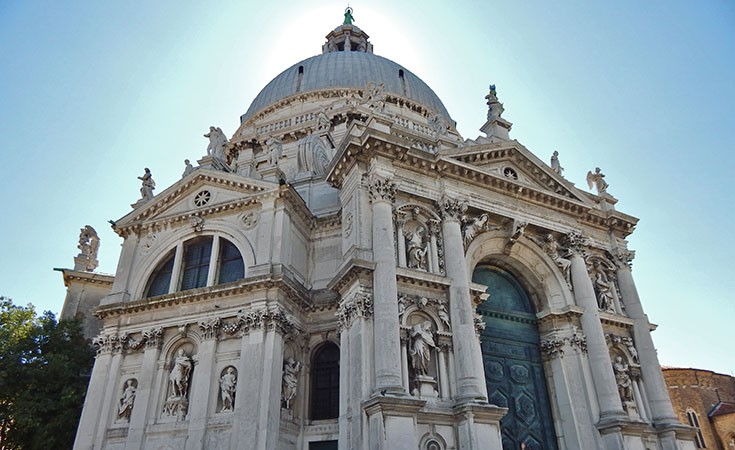
Basilica Santa Maria della Salute is one of the architectural symbols of the city and a building most visitors do not miss to visit. The beauty of this structure is so captivating that it ends up on most visitors’ photos and travel guides. However, the real reason why this building was constructed is much more sinister and hides an incredibly interesting story.
Basilica Santa Maria della Salute is located just across the Grand Canal from Piazza St. Marco and Doge’s Palace. Next to the basilica there is also an art Gallery Punta della Dogan.
 This very well-known basilica was actually built by the Venetians as a response to the plague outbreak which decimated the city in the 17th century. It lasted from 1630 to 1631 and around 80,000 people died in the lagoon and around 600,000 in the Venetian Republic. Numerous religious processions were organized to the existent religious buildings that had been constructed after similar events in the past, none of which was efficient in calming the outbreak. This is why the Venetian senate declared, just a month after the outbreak that a new church was going to be built and dedicated it to Virgin Mary. This is why the basilica is called Santa Maria della Salute (Salute meaning health).
This very well-known basilica was actually built by the Venetians as a response to the plague outbreak which decimated the city in the 17th century. It lasted from 1630 to 1631 and around 80,000 people died in the lagoon and around 600,000 in the Venetian Republic. Numerous religious processions were organized to the existent religious buildings that had been constructed after similar events in the past, none of which was efficient in calming the outbreak. This is why the Venetian senate declared, just a month after the outbreak that a new church was going to be built and dedicated it to Virgin Mary. This is why the basilica is called Santa Maria della Salute (Salute meaning health).
Interestingly, it is believed that the plague was brougth by one of the ambassadors of the Duke of Montova-Carlo I Gonzaga Nevers (today Montova is a small city in the province of Lombardy). He was soon transferred to an island in the Venetian Lagoon - Lazzaretto Vecchio, where at that time there was a hospital that threated infectious diseases. Even though the ambassador was isolated on the island, a contact with a Venetian woodworker was enough to start the outbreak.
Already in 1631, the first religious procession was organized in order to thank Virgin Mary for the liberation of the city from the plague. The previous year it was decided that a religious procession was to be organized each year in which the city was free of plague. Over time, this practice became one of the well-known events in Venice, since on each November 21, city officials start a parade on St. Mark’s Square. From here they cross the Grand Canal, over a specially assembled pontoon bridge that connects San Marco and the Basilica Santa Maria della Salute.
Interesting facts